The energy transition in five charts
The energy transition is driven by the exponential growth of renewables, and the key changes will happen by 2030.
Hi folks - I have joined the modern era and am shifting from email to Substack to send out our research. I hope that is OK.
1. The energy transition is a technology revolution.
At the heart of the energy transition lies the fact that renewable technologies are far superior to fossil fuels. The energy transition is a shift from a concentrated, expensive, polluting commodity-based system with no learning curve, to an efficient, manufactured, technology-driven system that offers continuously falling costs and is available everywhere. It is moving from heavy, fiery molecules to light, obedient electrons; from hunting fossil fuels to farming the sun.
Like past technology shifts, it is a transformation, not merely a substitution. As RethinkX notes, this is not a brown caterpillar to a green caterpillar, but rather a caterpillar to a butterfly, which means different economics, geographies, winners, and energy carriers. Just like past technology shifts, the falling costs of the new render the old obsolete.
Technologies beat commodities.
2. The renewables revolution is exponential, not linear.
When it comes to the renewables revolution, linear is the default perception, but exponential is the default reality. The growth of the key new energy technologies is exponential. It has been in the past, and it will continue to be for the foreseeable future. Companies and countries need to be quick to act, for it is hard to catch an exponential curve from behind.
Exponential is the new normal.
3. The renewables revolution is led by China.
Across manufacturing, deployment, and costs, China is far ahead of the rest of the world. As in past technology shifts, there is a geographical center that disseminates the superior technology around the world. If you wanted to understand the diffusion of the internet, you looked to and modeled the United States. If you want to understand the energy transition, you look to China.
China’s leadership creates a competitive race to the top, which can be seen in recently enacted policies in the United States and Europe.
China is setting the pace of the renewables race.
4. This is the decade of change.
The 2020s are the disruption decade, where renewable technology sales race up the S-curve. If the energy transition were a novel, this decade would be its climax.
The energy system is one of stocks (the bathtub) and flows (the dirty tap and the clean tap). By the end of the decade the clean tap will be on full and the dirty tap will be drying up. Heat pumps, electric vehicles, solar, and wind will all be near the top of their sales S-curves. Once the flow from the tap is clean, the drain (or natural retirement rates) will flush away the fossil system in succeeding decades.
Turn up the clean tap, turn down the noise.
5. By 2030 the debate will be very different.
By 2030, renewables will dominate the sales of energy-producing and consuming technologies. The green prize will be evident. Cheap renewables will be even cheaper. Fossil fuel demand will be off the current plateau and in clear decline. The negative externalities of fossil fuels will be increasingly weaponized. Climate impacts will be more visible. In 2023, it is hard to imagine what this will look like, let alone model it in any detail.
This means we must do as much as we can to narrow our time horizons and focus on speeding up the deployment of key renewables. Four technologies (solar, wind, electric vehicles, and heat pumps), in four markets (China, the United States, the European Union, and India), over the next four years, set the direction. Meanwhile it is vital for other locations and technologies to get onto a similar path.
By 2030, the renewable revolution will be obvious to all.
Published by RMI at rmi.org/the-energy-transition-in-five-charts-and-not-too-many-numbers/





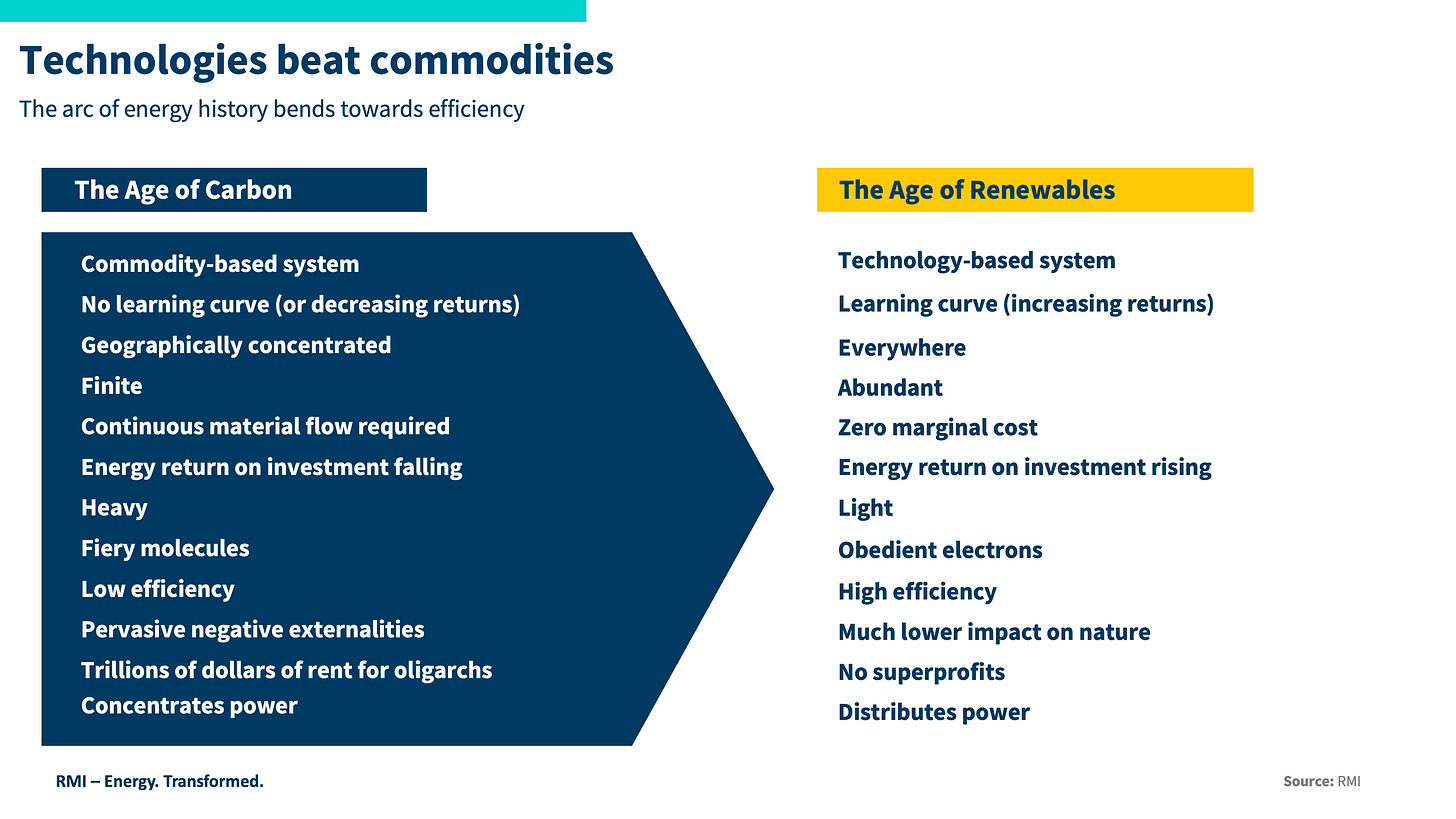
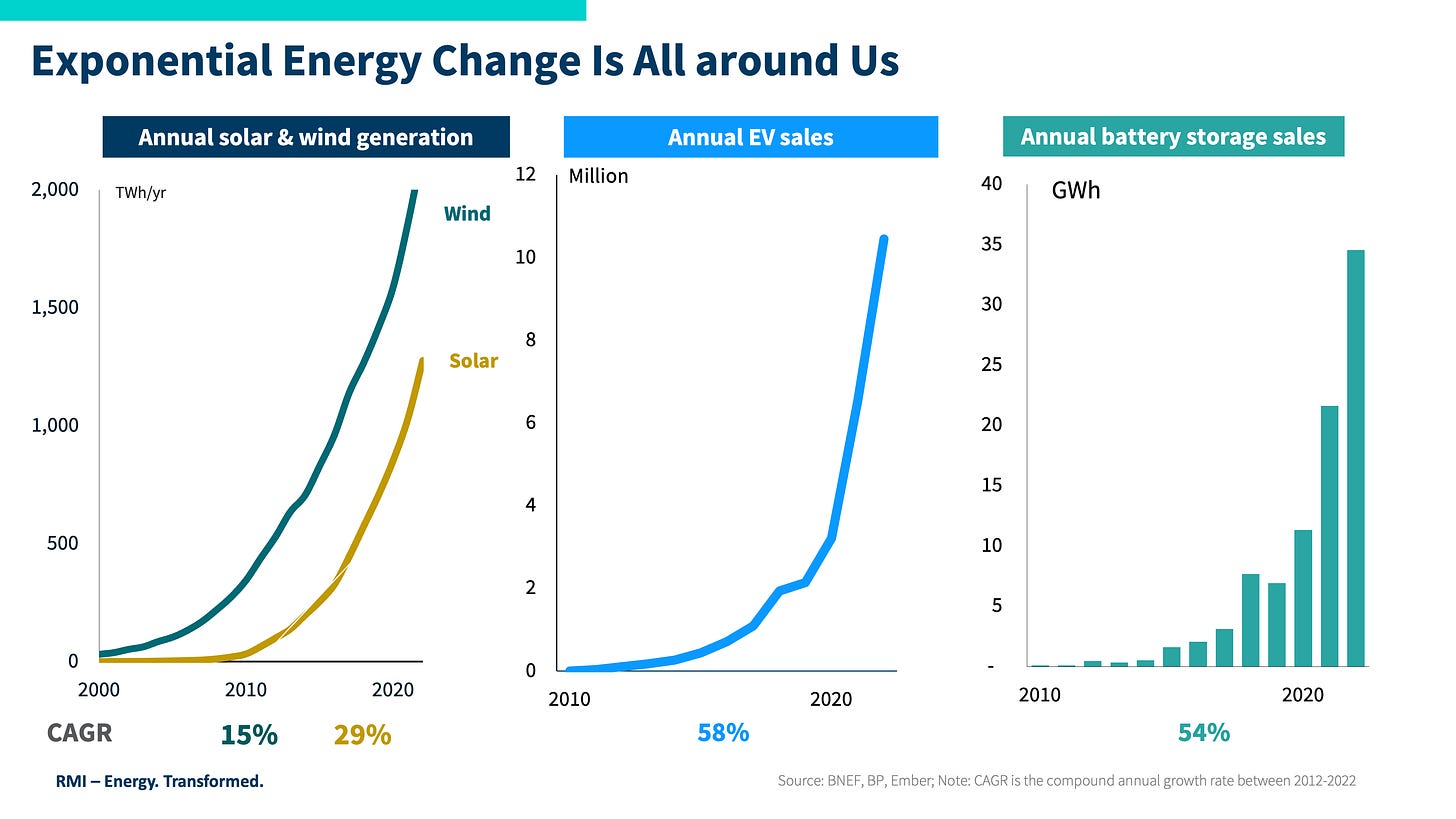
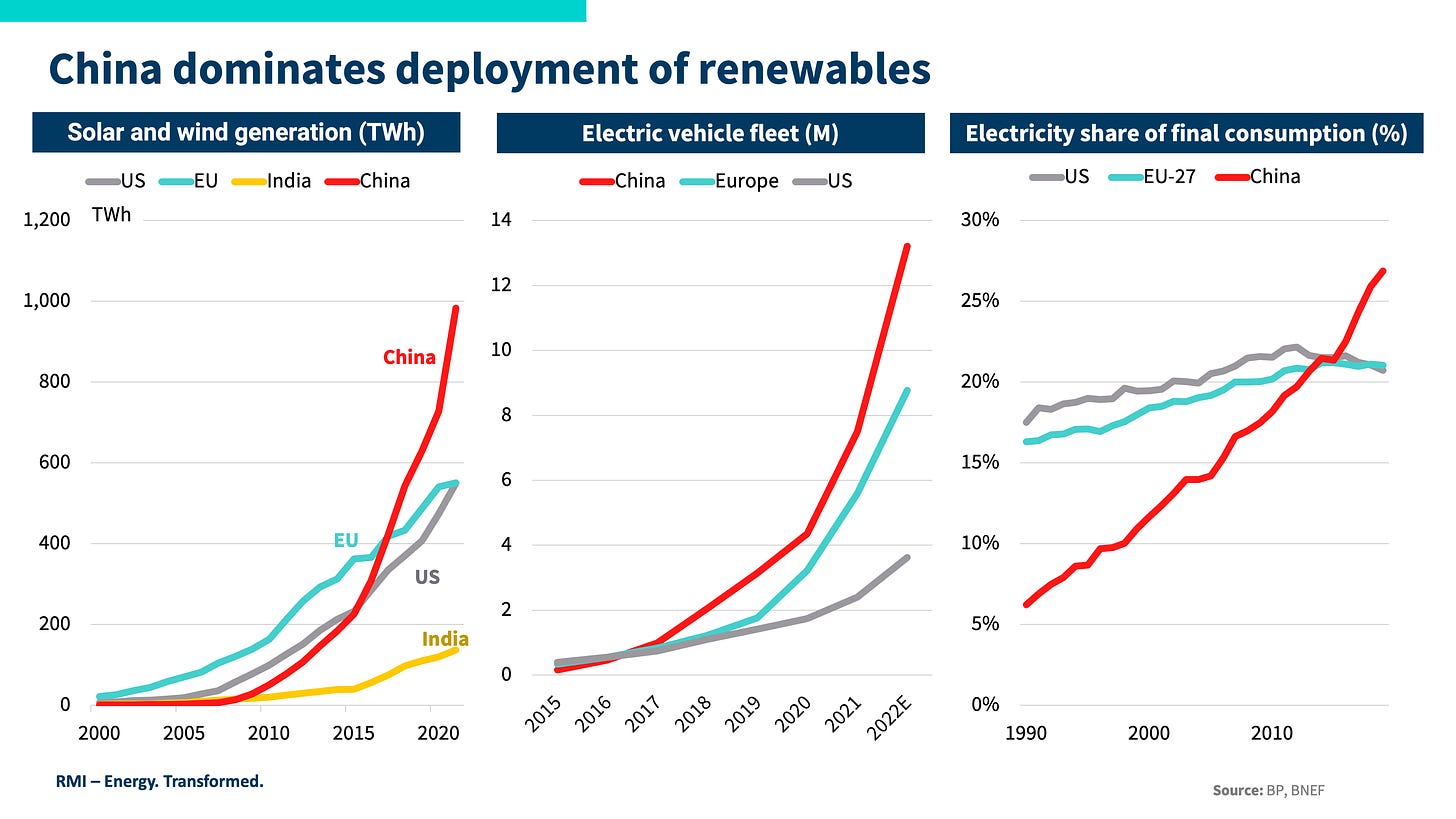
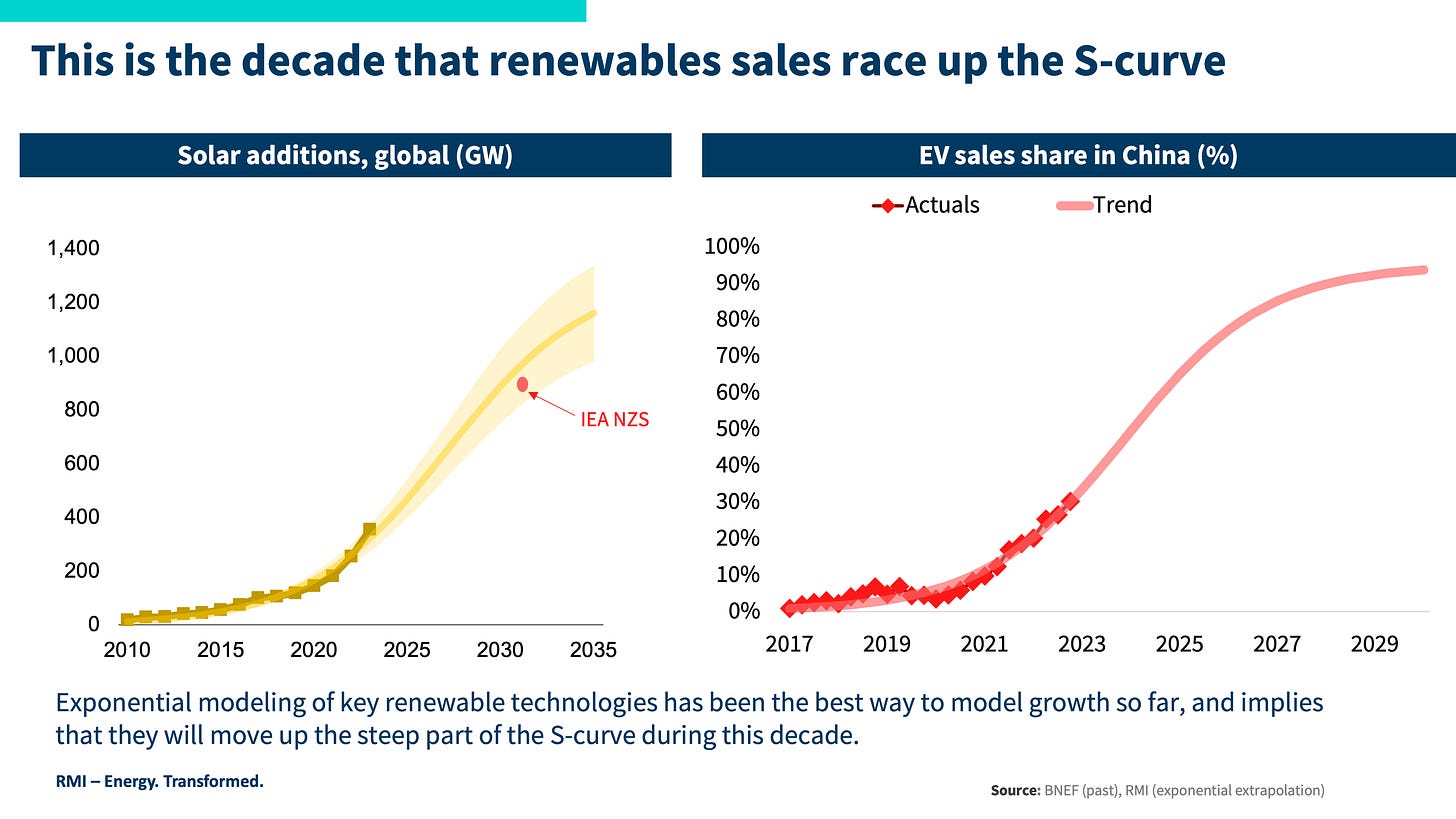
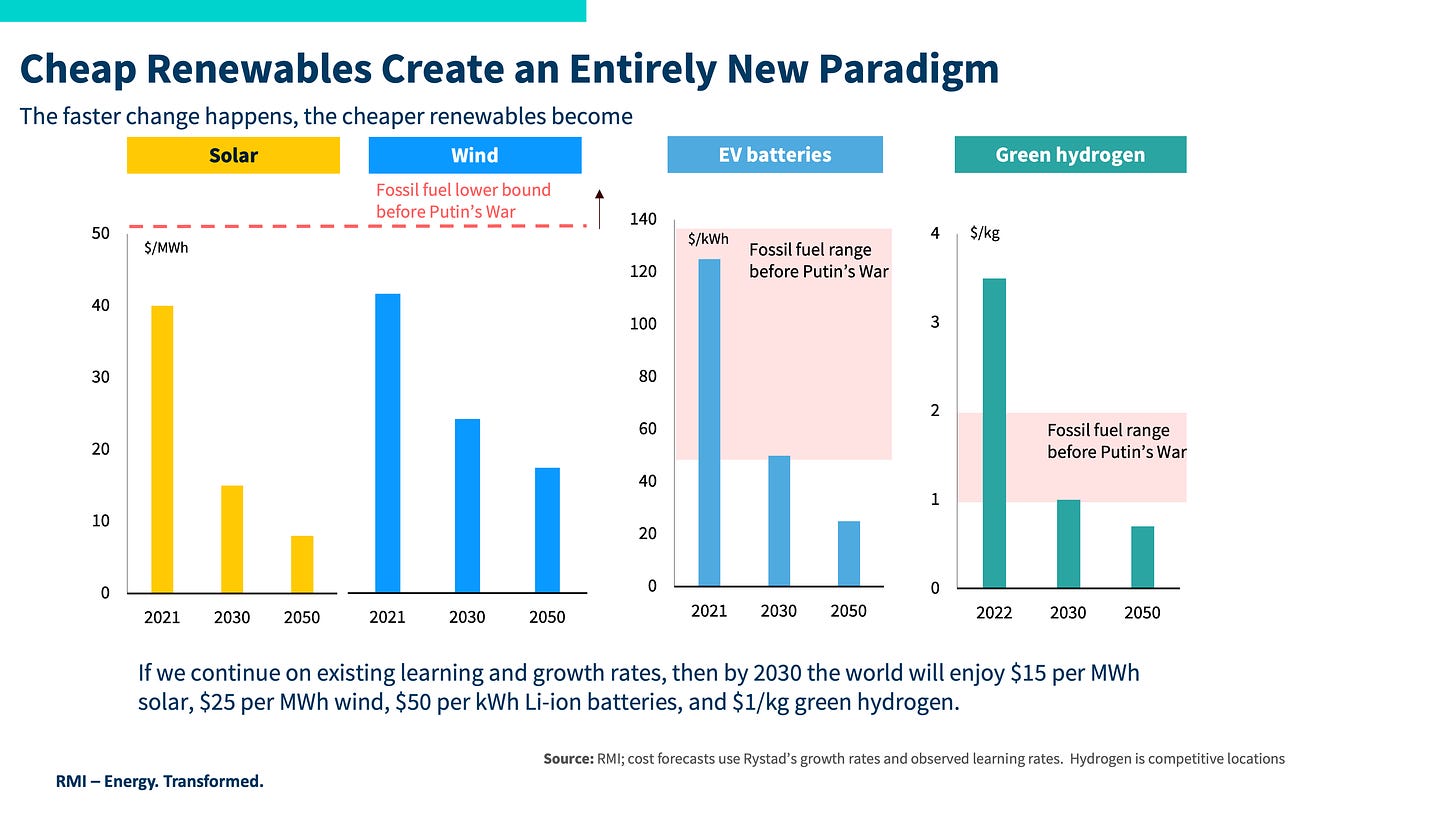
Thank you for your message. There is of course exponential growth of battery storage, EV (future battery storage), and digitisation. All of which will make this possible. So challenging, but feasible is I think fair. And agree we need to work hard to cross all these barriers, as we have been doing for 20 years.
Great article.
Two aspects you don't mention above but might be interesting to explore in subsequent blogs?
Where is the exponential growth of DSR (to accompany the other exp growth curves)? Increasing intermittent renewables, and increasing electrification of heat and transport (and volatility of demand) increase the need for system flexibility (storage - but crucially - demand side response - particularly from EVs, Heat pumps, EVs). Without massive increase in flex, system costs will start increasing rapidly (e.g. see A systematic review of the costs and impacts of integrating variable renewables into power grids, Philip J. Heptonstall and Robert J. K. Gross, https://doi.org/10.1038/s41560-020-00695-4, Nature Energy | VOL 6 | January 2021 | 72–83 | ).
Secondly - electricity networks (transmission and distribution) and system operators will struggle/are struggling with these growth rates - and investing in the required network capacity ahead of need. This will hold back renewable generation and battery growth. It will get worse if companies start steering consumer devices (to provide the DSR to keep broader system costs low) - they will be removing diversity of loads from the system - specifically they will be eliminating ADMD (after diversity maximum demand) that LV network operators use to calculate how much load their LV networks can support.
There is a pretty challenging balancing act coming up where we need consumer (automated) DSR, but simultaneously need networks to provide signals to avoid DSR causing/exacerbating network problems as they respond to wholesale prices (and herd around low price periods). To me this says we need more dynamic network signals, but talking with DSOs and TSOs across Europe (including the UK), they are nowhere near reaching the same conclusions...